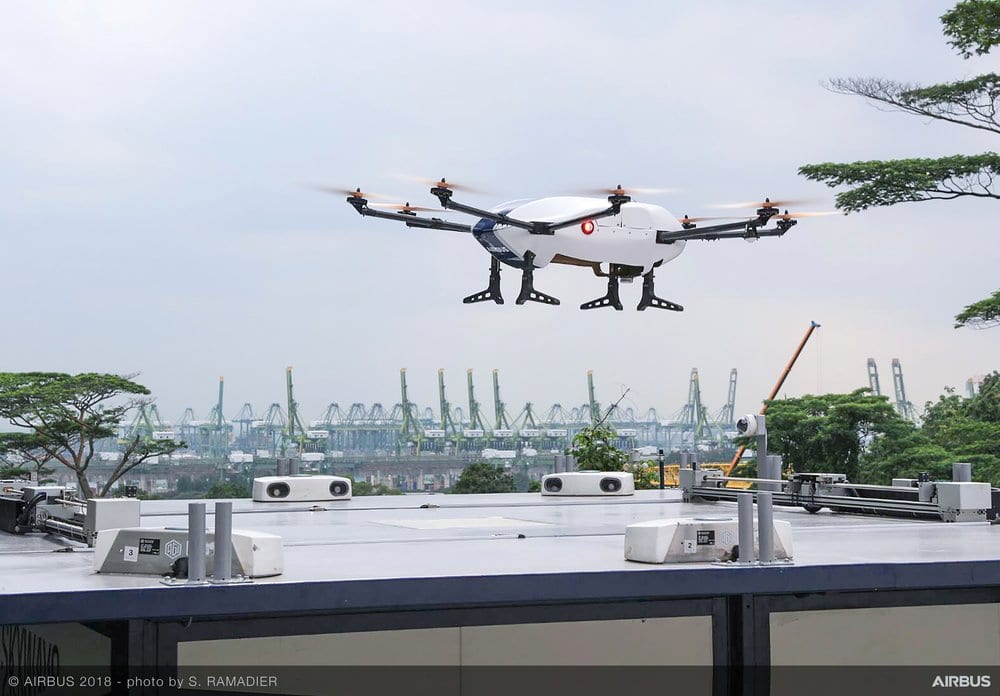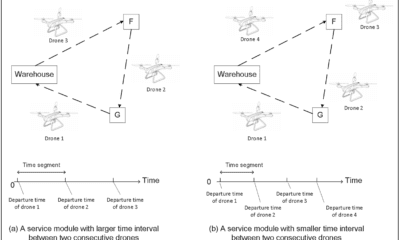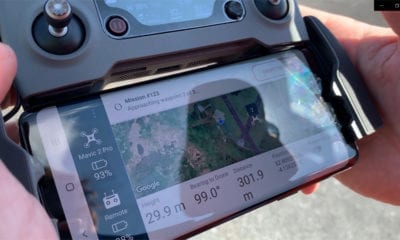Norwegian Hospitals to Carry Blood and Medical Samples with Drones
In an important contribution to improving health in Norway, a new drone delivery project is being undertaken by the Oslo University Hospital (OUS).
The Defense Research Institute (FFI), Sintef and Meteorological Institute (MET) are partners of OUS in the project, which aims to achieve more effective and safer collection, treatment and distribution of blood samples, radioactive contrast agents, tissue samples and other biological material.
“We have been working on this for two years, and now that we have an approved application by the Research Council, we will intensify our work. The project itself has a perspective of three years, but already this year we hope to be able to carry out some test flights with drones in the Armed Forces area, “says project manager Knut Korsell.
Korsell has a background in the field of supercomputing, having worked for many years for IBM and Silicon Graphics in the United States.
He works with Karl-Arne Johannessen, the former director at Ullevål Hospital, whose responsibility is to coordinate what is required of new organization in hospitals.
“Today, this transport is mostly based on cars, taxis and in some cases aircraft and helicopters. It is not directly traceable and far from safe,” explains Korsell.
Each of the four hospitals in Oslo, Radium Hospital, Aker, Ullevål and Rikshospitalet has its own laboratories. Roughly, about 20 million blood samples are taken every year at these hospitals.
“It is not assumed that today’s costly investment infrastructure in many local laboratories is the most cost-effective in the future. We want to simulate a solution where, for example, we only have a joint laboratory that can analyze samples for more hospitals. Initially, we focus on OUS, but we also see potential in other parts of the country. Therefore, we have established a collaboration with the hospital Innlandet, which will build a new large hospital, as well as the hospital in Stavanger,” says Johannessen.
Sintef, FFI and MET represent international expertise and participate in the project.
Their role is to assist in calculations of something crucial to achieving this, namely the management of turbulence around buildings and what is required of drones to avoid problems with moisture and ice.
“As an example, I can say that our partners today have a numerical model for calculating turbulence with a limit of 100 meters. It must be down to 25 meters. Our transportation requires takeoff and landing in special places because the drones do not have stabilizing moving energy when they land. We have looked at possibilities for landing the drones in a funnel on the roof above the hospital, “says Korsell.
Airbus cooperation
Today it is prohibited to fly with drones in Oslo. The project has access to expertise in order to investigate what is required of drones corridors in order to achieve safe transportation that does not prevent ambulance helicopters used frequently in and out of hospitals.
“We work under an umbrella called community enjoyment that will give us opportunities to develop and test the project, but based on the consent of the Civil Aviation Authority.
“The project management has initiated cooperation with Airbus and their company for the sale of helicopters in Norway, Østnes. Airbus currently has a drone test project in the big university area in Singapore.
“Both Airbus and Boeing are developing highly advanced drones that can also transport people. And we are pretty sure that the safe drone we are going to have is not yet built. We see many challenges related to the droning project…the system that needs to be built to ensure safe and efficient transportation of blood samples and other biological material,”says Korsell.
Recently, the project had its first seminar where all parties met to discuss further progress.
“The only thing we are already sure is that the drones are coming, and that quickly. We are not just talking about UAV in the form of drones, but about UAS, far more of the entire infrastructure and system for the treatment of biotopic samples must be automated.
13 times around the equator
Now a new large hospital is being investigated for Oslo. In this regard, Karl-Arne Johannessen sees great opportunities to think completely new about organizing.
“I have been a medical doctor for 30 years. There has been an enormous amount of technology and treatment methods that have changed our treatment radically. But in terms of organization and logistics, it is largely based on traditional solutions. We have an ambition to use this project also to simplify and improve logistics and the patient’s meeting with the health service,” he says.
Another useful perspective is, for example, PET scanning (positron emission tomography), which today provides a more accurate diagnosis and treatment, and is increasingly used, especially for cancer patients. However, the radioactive contrasts used have a very short half-life, all the way down to 30 minutes.
“Should a PET be carried out at Lillehammer, one must start with a dose…16 times greater than the patient should have. Could we ship these with drones, reducing the journey quarter of the journey time, we could use [only] four instead,” says Johannessen.
This is also one of the reasons why Innlandet, which is building a new hospital, has been engaged in cooperation with OUS on the drones project.
“An important motivation for using drones is that this will provide more efficient transportation for such services and reduce the functional distances of services that are being decentralized. Patients can escape a long and time-consuming route by moving the services closer to them, “says Karl-Arne Johannessen.
Pneumatic Tube System
Section manager at the department of medical biochemistry at Rikshospitalet, Anita Thornquist, shows Tekniske Ukeblad around the blood laboratory. Here they have invested in an automation line where the samples are analyzed with many advanced methods depending on the requirement ordered on the requisition. Some samples can be completed in 10 minutes, while others may take a couple of hours.
Automation is so advanced that in the case of blood samples with fast-paced instant help, a sample could take shortcuts to sneak past the queue of other samples.
“But see here, the blood tests come in with a pipe post. Each test tube has a sheet of paper with it, fastened with a knit. It is the requisition we must check the test tubes before the blood test is passed on to the automation line. This whole process can also be automated,” says Thornquist.
Special requirements are required for comprehensive packing of both blood samples and radioactive isotopes before a bid arrives and retrieves them for further distribution by car.
“We are also positive about the drones project. We spend a lot of time packing and as the use of radioactive pharmaceutical products increases, we will be able to get a far more efficient business. We deliver to most hospitals in Norway,” says senior engineer Einar Mantor Iversen at the Norwegian Medical Cyclone Center for Technical Weekly.
“We see many opportunities for completely new thinking. We want to challenge the traditional culture at the hospitals to get more efficient digital organization and logistics. That is why we also talk with the Post, which has 120 transhipment stations and also plans to use drones. Perhaps we should open up for cooperation with other actors who think in the same paths, we must not do everything ourselves,” says Knut Korsell.
The infrastructure must be in place first
Airbus, currently testing drones across the university area in Singapore, believes the infrastructure must be in place before choosing the drone type for the OUS project.
Aage Jørgensen, who is COO in Østnes Helicopters, which is the sales office for Airbus in Norway, told Teknisk Ukeblad that they are in dialogue with OUS for a collaboration in the drones project.
“If you succeed in such a project in Norway that is so challenging in weather conditions, you will probably also succeed elsewhere,” says Jørgensen.
Many pilot projects are underway, but the big challenge is to get this into an airspace over a city with a lot of other helicopter traffic from police, ambulance and military.
“There is a lot of coordination needed to succeed in autonomous drones transport in a safe and secure way, including using drones with redundancies so that they do not risk falling into the mind of anyone,” says Jørgensen.
In a number of countries, projects are ongoing to exploit drones for freight over cities. This includes Denmark, Germany, Switzerland and the United States. The Airbus project at the University Quarter in Singapore will enter Phase 2, which means heavy testing in practice.
“Drones will come, but all infrastructure must be ready before choosing which drones. This requires close dialogue with aviation authorities. Controllable systems must be made, for example, by establishing separate air corridors for drones with clear borders, both in terms of height and width, and a joint control center that communicates with those who control aircraft and helicopters,” says Jørgensen.
He adds that the special weather conditions in Norway make the OUS project very interesting. The drones must master both cold and ice, heavy snow and hard winds 24 hours a day 365 days a year.
“This is also the reason why Airbus sees drone transport as an important business area, where we are now primarily concerned with expertise and infrastructure,” says Jørgensen.
A version of this article first appeared in Norwegian on Teknisk Ukeblad


























